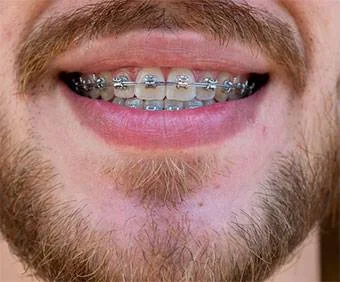Orthodontics
Orthodontics Services
There are two ways to straighten teeth, either with orthodontics. Cosmetically straightening is not possible in orthodontics or Invisalign. Cosmetically restoration can be done. Orthodontics is the area of dentistry concerned with the correction of misaligned teeth. For people with crowded teeth, this can affect your smile and confidence.
It can also lead to difficult cleaning which may encourage dental decay or gum disease, all these problems can trap food which can lead to gum. Braces or clear aligners can be used to simply move the teeth for a better, more aesthetic smile.
Orthodontics Treatment Options
Our orthodontist specialists can help you to understand which of the available treatment options will be best for you or your child.
Between fixed and removable plates, metal braces, ceramic braces, lingual (invisible) braces, and clear aligners, there are treatments to suit every need and lifestyle.
It is best to make an appointment with your orthodontist prior to deciding on the treatment option you would like because every case is different and may require a particular orthodontic care option.
In some cases our dentists refer the patients to orthodontist for further consultation or treatment.
Each patient will then need a tailor-made treatment plan which will be personalized by the orthodontist.
In order to decide what treatment is required for you, your orthodontist will need to carry out a full assessment of your teeth which is likely to include x-rays, impressions (moulds of the teeth) and photographs.
Treatment can take more than two years and Braces are needed the majority of the time.
Inman Aligner Services
We offer Inman Aligner services and it is the orthodontic treatment of choice for adult relapses.
The Inman Aligner works quickly and efficiently and if you don’t like the idea of having brackets stuck to your teeth or waiting months and months for a clear brace to work, you can now have your front teeth straightened in as little as 6 -16 weeks.
We recommend to our patients to continue to see their dentist for regular check-ups and cleaning throughout their orthodontic care as they play a very important role in maintaining good oral health.
Our pool of dentists provides a wide range of competitively priced orthodontic services to both adult and children patients on a private basis.

General Orthodontics
Nearly one million people in the UK started having orthodontics last year and more adults than ever before require treatment. Why? Orthodontic treatment is about making the best of your teeth; it’s about improving the harmony of your mouth and jaws.
Once you can bite together correctly, you can eat more comfortably and care for your teeth and gums more easily and your smile will benefit immensely!
Orthodontics Treatment Can Provide
Straight teeth which are easy to clean.
An improved bite.
Ease with eating and speaking.
A beautiful smile.
The Starting Point
Some patients are treated by dentists with extra training and experience to treat the milder cases.
These are some of the most common reasons for a referral:
Protruding upper front teeth - one of the most common dental problems.
Crowding - a narrow jaw may mean there is not enough room for your teeth, resulting in crowding. Conversely, some patients have significant gaps between their teeth.
Asymmetry - particularly when the centre lines of the upper and lower front teeth do not match, perhaps because the teeth have drifted or the position of the jaw has shifted.
A deep bite - when your upper teeth cover the lower teeth too much.
A reverse bite - when your upper teeth bite inside the lower teeth.
An open bite - when your front teeth remain apart when your back teeth meet; the tongue is often still visible between the upper and lower front teeth.
Impacted teeth - in some patients, secondary teeth come through in the wrong position or do not erupt at all. Orthodontic treatment can help bring these teeth into the correct position.

Getting Treatment
In order to decide what treatment is required for you, your orthodontist will need to carry out a full assessment of your teeth which is likely to include x-rays, impressions (moulds of the teeth) and photographs.
Treatment can take more than two years so it is important you are happy from the outset with what is recommended. Braces are almost always needed.

Those Which Are Used Most Often Are:
The wires exert gentle pressure to move the teeth into a new position. The brackets can be metal, ceramic or even gold and the elastic hoops come in many colours.
Retainers – at the end of treatment, some patients may need to wear retainers to hold their teeth in the new position. These can be removable or fixed and are an important part of treatment.

